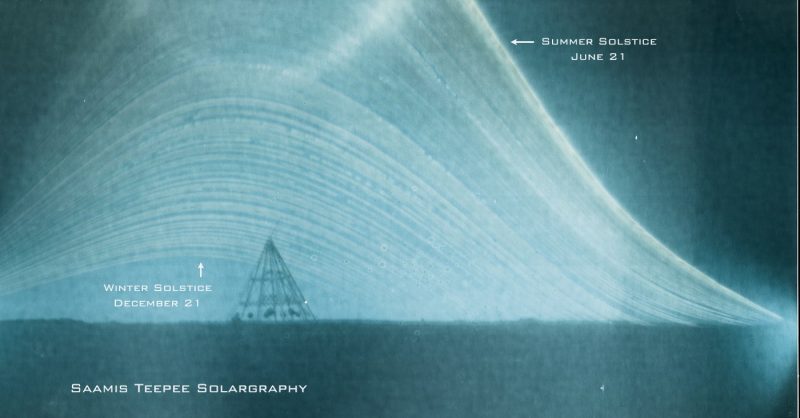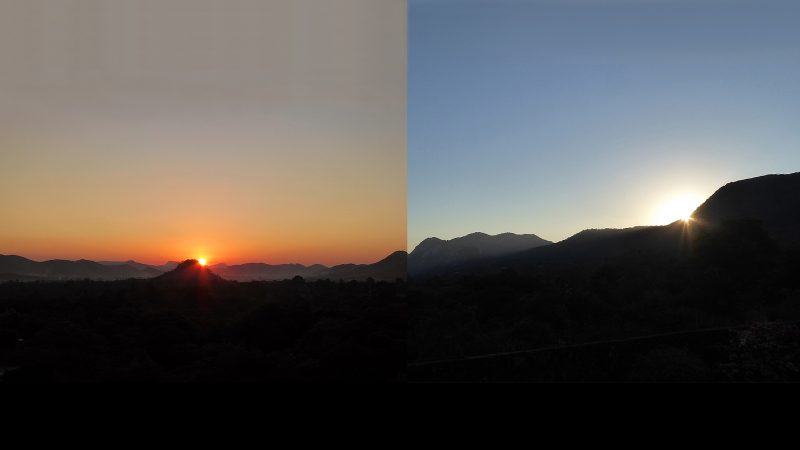Winter Solstice Does That Mean Days Will Get Longer Again

No affair where yous live on Earth'due south globe – no matter what time information technology happens for you – the solstice is your point to celebrate seasonal change.
What is it? The December solstice marks the dominicus's southernmost point in our heaven for this year.
When is the next one? The adjacent December solstice will fall on Wednesday, December 21, 2022, at 21:48 UTC (that is 3:48 p.g. in central North America; interpret UTC to your time).
Note: On this solstice, the sun will be overhead at noon as viewed from the Tropic of Capricorn. For u.s.a. in the Northern Hemisphere, the December solstice volition mark the longest nights and shortest days of the year. For the Southern Hemisphere, it will marker the shortest nights and longest days. Subsequently this solstice, the sun will moving north over again.




What is a solstice?
The earliest people on Earth knew that the sunday's path across the sky, the length of daylight, and the location of the sunrise and sunset all shifted in a regular way throughout the year. They built monuments such as Stonehenge in England and at Machu Picchu in Republic of peru to follow the sun's yearly progress.
But today, we run into the solstice differently. We can moving-picture show it from the vantage point of space, and we know that the solstice is an astronomical issue. Information technology'south caused by the tilt of Earth'southward axis and past its orbital move effectually the lord's day.
World doesn't orbit upright. Instead, it'due south tilted on its axis by 23 ane/2 degrees. Through the twelvemonth, this tilt causes World's Northern and Southern Hemispheres trade places in receiving the sunday'southward light and warmth most straight. It's this tilt, not our distance from the lord's day, that causes winter and summertime. In fact, we're closest to – not farthest from – the sun at the turn of every new year. But nosotros in the Northern Hemisphere are moving into winter. That's because the Northern Hemisphere leans uttermost abroad from the sun for the twelvemonth around this time.
EarthSky 2022 lunar calendars now available! They brand slap-up gifts. Order at present. Going fast!
The December solstice
At the December solstice, Earth is positioned so the sunday stays below the North Pole'due south horizon. Every bit seen from the latitude 23 1/2 degrees s of the equator, at the imaginary line encircling the globe known equally the Tropic of Capricorn, the sun shines directly overhead at noon. This is as far south as the sun always gets, and all locations due south of the equator have day lengths greater than 12 hours.
Meanwhile, all locations north of the equator have twenty-four hours lengths shorter than 12 hours.
For us on the northern role of Globe, the shortest day comes at the solstice. Afterwards the winter solstice, the days will get longer, and the nights shorter.
It's a seasonal shift that nearly everyone notices.

Where should I look to run into signs of the Dec solstice in nature?
Everywhere.
For all of Earth'southward creatures, zip is so key as the length of daylight. Later on all, the sunday is the ultimate source of all light and warmth on World.
In the Northern Hemisphere, you'll discover belatedly dawns and early sunsets, the low arc of the sun across the sky each day, and how low the sun appears in the sky at local noon. Look at your noontime shadow, also. Effectually the fourth dimension of the December solstice, it's your longest noontime shadow of the year.
In the Southern Hemisphere, it'due south opposite. Dawn comes early, sunset comes late, the sun is loftier, and it'southward your shortest noontime shadow of the year.


Why doesn't the earliest sunset come on the shortest day?
The December solstice marks the shortest mean solar day of the year in the Northern Hemisphere and longest day in the Southern Hemisphere. But the earliest sunset – or earliest sunrise if you lot're south of the equator – happens before the December solstice.
Instead of focusing on the fourth dimension of dusk or sunrise, the key is in what is chosen truthful solar apex, which is the fourth dimension of solar day that the sun reaches its highest betoken in its journey across your sky.
In early December, true solar noon comes virtually 10 minutes earlier by the clock than it does at the solstice around December 21. With true noon coming subsequently the solstice, so volition the sunrise and sunset times.
It's this discrepancy between clock time and sun time that causes the Northern Hemisphere's primeval dusk and the Southern Hemisphere'south earliest sunrise to precede the December solstice.
This happens primarily because of the tilt of the Earth's axis. A secondary but some other contributing factor to this discrepancy between clock apex and sunday apex comes from the World's elliptical – ellipsoidal – orbit around the sun. Globe'due south orbit is not a perfect circle, and the closer nosotros are to the sun, the faster we motion in our orbit.
Our closest betoken to the dominicus – or perihelion – comes in early January. And so we are moving fastest in orbit around now, slightly faster than our average speed of nigh 19 miles per second (thirty km per 2nd). The discrepancy betwixt lord's day time and clock time is greater effectually the December solstice than the June solstice because nosotros're nearer the dominicus at this time of year.

Does latitude touch the earliest sunset?
Yes! The precise appointment of the earliest dusk depends on your breadth. At mid-northern latitudes, it comes in early December each twelvemonth. At northern temperate latitudes further north – such as in Canada and Alaska – the year's primeval sunset comes around mid-December. Shut to the Chill Circumvolve, the earliest sunset and the Dec solstice occur on or almost the same solar day.
By the mode, the latest sunrise doesn't come on the solstice either. From mid-northern latitudes, the latest sunrise comes in early January.
The exact dates vary, but the sequence is always the same: primeval sunset in early Dec, shortest solar day on the solstice around December 22, latest sunrise in early January.
And then the cycle continues.
Bottom line: The 2022 December solstice takes place on December 21, at 21:48 UTC. It marks the Northern Hemisphere'due south shortest mean solar day (commencement twenty-four hours of winter) and Southern Hemisphere'southward longest day (first day of summer). Happy solstice to all!
Visit EarthSky'south dark heaven guide
Source: https://earthsky.org/astronomy-essentials/everything-you-need-to-know-december-solstice/
0 Response to "Winter Solstice Does That Mean Days Will Get Longer Again"
Post a Comment